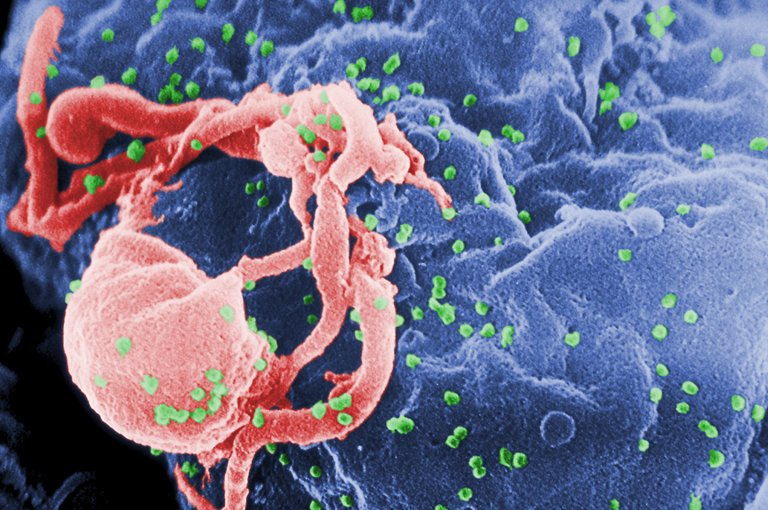A new study published last week has linked intravenous drug abuse to a gene variant of RASGRF2 (known as RASGRF2-int) which has the presence of a viral element in its sequence. The RASGRF2 gene codes for a protein involved in neuron signalling, including the dopamine reward pathways of the brain. Previous research had shown a different variant of this gene to be associated with binge drinking and that mice engineered to have their version of the same gene ablated were more resistant to addiction.
But let us slow down and explain some basics.
As you surely know, our genomes store their genetic information in the form of DNA. In order for a cell to "activate" a gene, it must first copy it into RNA (a very similar molecule to DNA, which I have touched upon before), a process known as "transcription." RNAs that have been so transcribed can have a function by themselves or go on to be "translated" into proteins by the cell machinery, which carry out the final function of the gene in that case. In the early 1970s it was discovered that some viruses could copy their RNA genome to DNA and thus incorporate themselves into the DNA genome of a cell, something that earned Howard Temin, David Baltimore and Renato Dulbecco the 1975 Nobel Prize in Physiology or Medicine. Since this molecular process (copying RNA into DNA) is basically the opposite of "normal" transcription, it was dubbed "retrotranscription" and these viruses are now known as retroviruses.

So that's it? Every time we get a retroviral infection our offspring will inherit the virus? Not exactly. The retroviral DNA needs to be incorporated specifically into the germline (ova and sperm) in order to have any chance of being passed down the generations. As it turns out, the Human Genome Project has shown this has happened multiple times: around 8% of our genome is composed of these retroviral sequences, now largely inactive and collectively known as "human endogenous retroviruses" (HERVs).
If the retroviral DNA copy happens to integrate itself in a gene, it can create a new gene variant for natural selection to select for or against. If it integrates itself in the coding region of the gene, it will probably change its function more directly but if it inserts itself in the non-coding regions associated with regulating the gene's expression, it may affect the way, time or place in the body that the gene is expressed, not so much the gene function. This latter scenario is the case for RASGRF2-int: the HERV is found in an "intron," a non-coding, regulatory region that genes can have.
Now we can come back to the new study.
Specifically, the researchers worked with two populations: a Greek cohort of 202 HIV patients and a UK-based cohort of 184 hepatitis C patients. Of the 202 HIV patients, 102 had a history of drug abuse, while the same was true for 100 of the 184 UK patients. These two populations were attractive to be studied as they contained patients with a documented history of drug abuse and also similar patients with no such history who could act as controls. Furthermore, for the UK population the researchers were able to statistically control for age, gender, smoking and alcohol use. After analysing the RASGRF2 genetics of the patients, the study found that compared to their respective controls, the Greek patients with a history of drug abuse were a little over 2 times more likely to have the RASGRF2-int gene variant, while their UK counterparts were 3.5 times more likely.
With this information in hand, the scientists decided to then incorporate RASGRF2-int into a neuronal cell model. After growing the modified cells in culture for 18 days, they found enhanced transcription from certain parts of the gene, which they hypothesize leads to increased dopaminergic activity. If this gene variant is indeed increasing activity in the reward pathways of the brain, it could explain why people with RASGRF2-int have a higher chance of abusing drugs.
As we should always keep in mind, more studies are needed to cement these findings. RASGRF2-int is rare in modern human populations, being present in around 5% of people, but the same version of the gene has been found in our extinct cousins, Neanderthals. This suggests that the retroviral integration event occurred in our lineage before the rise of modern humans and that it was probably more common in archaic hominid populations.
Original paper:
Further reading and sources:
"Binge drinking gene: RASGRF-2 helps explain teenage alcohol abuse, scientists say" at HuffPost
This post has been voted on by the steemstem curation team and voting trail.
There is more to SteemSTEM than just writing posts, check here for some more tips on being a community member. You can also join our discord here to get to know the rest of the community!
You just planted 0.10 tree(s)!
We have planted already 3652.90 trees
out of 1,000,000
Let's save and restore Abongphen Highland Forest
in Cameroonian village Kedjom-Keku!
My Steem Power = 20739.25
Thanks a lot!